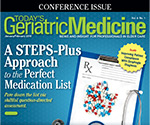 |
Promoting Patient Health Through 2016
On the corner of my home computer is a small piece of paper cut from an old copy of Investor’s Business Daily (IBD). It contains IBD’s 10 Secrets to Success. In every issue is a “Top 10” list of items their experts encourage investors to review. But the advice is not specifically investment related; it is, in fact, investor related. The items listed below are keys to individual investor behaviors that, in sum, lead to success.
I keep that paper there to remind me of the value of continuous quality improvement. It’s a visual reminder of the value of working constantly to upgrade knowledge, skills, and abilities in a topic area. It reminds me of the value of naming the challenge, identifying steps in a difficult process, and ultimately finding the oft-untapped potential of renewed effort. All are key messages for those of us in the business of personal training. Changing human behavior and thought processes is critical for clinical success, yet we don’t yet have surefire ways to successfully manage the change.
Continue reading » |
 |
 |
Q: What is the difference between Clostridium difficile (C diff) toxin and antigen? What are the recommendations on treatment?
DeEsta Howard
Nim Henson Geriatric Center
Jackson, Kentucky
A: C diff can produce toxins that attack the lining of the intestine. The toxins destroy cells and produce patches (plaques) of inflammatory cells and decaying cellular debris inside the colon and cause watery diarrhea.
Testing is often a combination of the following two assessments:
• Antigen detection for C diff: These are rapid tests (under one hour) that detect the presence of C diff antigen by latex agglutination or immunochromatographic assays. Because results of antigen testing alone are nonspecific, antigen assays have been employed in combination with tests for toxin detection, polymerase chain reaction, or toxigenic culture in two-step testing algorithms.
• C diff toxin: The toxin degrades at room temperature and may be undetectable within two hours after collection of a stool specimen. False-negative results occur when specimens are not promptly tested or are kept refrigerated until testing can be done.
Antibiotics can be used for treatment. For mild to moderate infection, metronidazole (Flagyl) is taken by mouth. Metronidazole is not FDA-approved for C diff infection but has been shown to be effective in mild to moderate infection. Side effects of metronidazole include nausea and a bitter taste in the mouth. For more severe and recurrent cases, vancomycin (Vancocin), also taken by mouth, may be prescribed. Another oral antibiotic, fidaxomicin (Dificid), has been approved to treat C diff.
Recommended sites for further reading include the Mayo Clinic and the Centers for Disease Control and Prevention.
Note: This information is not intended as a substitute for professional medical advice, diagnosis, or treatment. For questions regarding specific medical conditions, seek the advice of a physician or other qualified health care provider.
— Rosemary Laird, MD, MHSA, AGSF, is a geriatrician, executive medical director of senior services for Florida Hospital at Winter Park, and past president of the Florida Geriatrics Society. She is a coauthor of Take Your Oxygen First: Protecting Your Health and Happiness While Caring for a Loved One With Memory Loss. |
 |
|
|
 |
Eatwell
Eatwell, a seven-piece tableware set with 20 unique features specifically designed to meet the needs of those with physical, motor, and cognitive impairments, features bright primary colors. Angled bases on bowls and cups allow contents to naturally fall to one side, making them easier to scoop and drink, while wide-base drinkware is difficult to topple. Spoons are ergonomically designed with curvature that aligns with the contours of the bowls. To prevent spill damage, an apron, bib, or napkin can be tucked into flaps at the edge of the tray. Learn more »
Olea Sensor Networks
Olea Sensor Networks has debuted the OS-3008 with OleaSense software analytics for remote health monitoring applications. The wireless device can extract vital signs information and transmit data via Bluetooth. The design, smaller than a business card, can be embedded in a setback or on a bed, or worn around the neck. Learn more »
|
 |
 |
| Have a question you want answered by one of our experts? Send your question to TGMeditor@gvpub.com and it may be featured in an upcoming e-newsletter or print issue. |
 |
 |
 |
Set up Job Alerts and create your online Résumé
to let potential employers find you today! |
 |
 |
Have a product or service you want to market to geriatricians, other physicians and the geriatric care team of professionals who treat aging patients? Are you a recruiter looking to fill the many geriatric professional openings within a facility, physician practice or academic institution? Then utilize the reach of Today's Geriatric Medicine to accomplish your marketing goals and fill any open positions.
Coming up in our May/June issue is our Education Guide. Contact sales for more information.
A resource for professionals looking for new opportunities, as well as those physicians just curious to see what's out there, our Physician Recruitment Center gives physician recruiters a powerful tool to fill partnership opportunities, academic appointments, and hospital staff positions. To support your product marketing or recruiting needs, e-mail our experienced account executives today at sales@gvpub.com for more information or call 800-278-4400! |
 |
|


